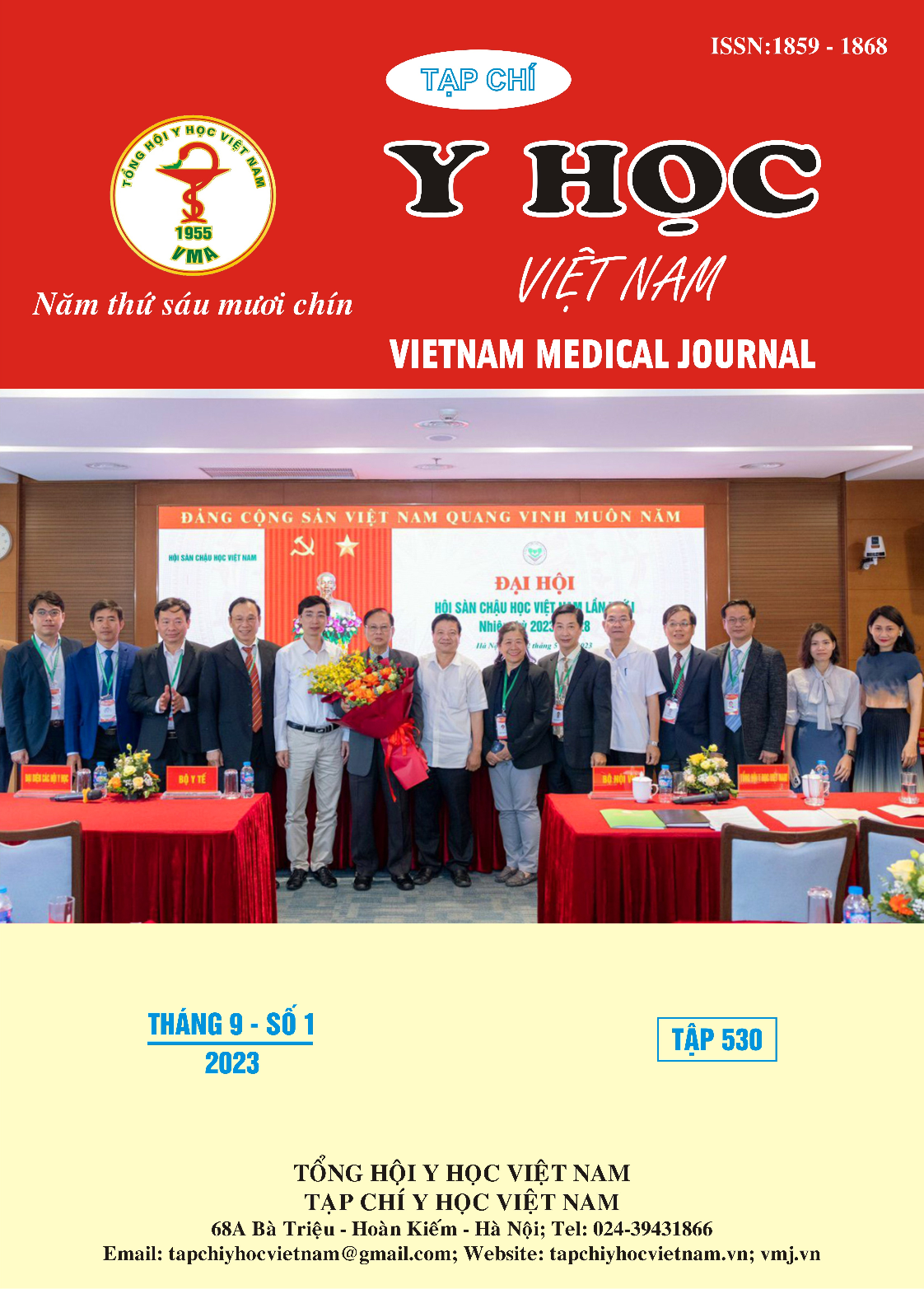GHÉP THẬN TỪ NGƯỜI HIẾN TẠNG SAU KHI CHẾT: TỶ LỆ SỐNG CÒN THẬN GHÉP VÀ BỆNH NHÂN
Nội dung chính của bài viết
Tóm tắt
Đặt vấn đề: Người hiến tạng (NHT) chết giúp mở rộng nguồn tạng hiến, và đang trở thánh xu hướng ghép tạng trên thế giới, khi nguồn thận từ người sống không đáp ứng nhu cầu. Mục tiêu nghiên cứu: Trình bày tỷ lệ sống còn thận ghép, tỷ lệ sống còn BN nhận thận, và các yếu tố ảnh hưởng đến tỷ lệ sống còn này. Phương pháp nghiên cứu: Nghiên cứu mô tả hàng loạt ca, hồi cứu, bao gồm những trường hợp (TH) nhận thận từ NHT chết, từ tháng 4/2008 đến tháng 12/ 2021, tại bệnh viện Chợ Rẫy. Kết quả và bàn luận: Nghiên cứu có 27 NHT chết, trung vị tuổi 37, giới tính nam chiếm đa số 88,8%. Trung vị KDPI là 35%. 51 TH nhận thận, có trung vị tuổi là 37, nam giới 72,5%, chỉ số khối cơ thể là 20,9, thời gian điều trị thay thế thận là 39,3 tháng, thận nhân tạo là phương pháp chủ yếu, trung vị thời gian thiếu máu lạnh là 7 giờ, thời gian thiếu máu ấm là 38 phút. Thuốc ức chế miễn dịch (UCMD) dẫn nhập chủ yếu là nhóm ức chế thụ thể IL-2, chiếm 64,7%. Thuốc UCMD duy trì chủ yếu với tacrolimus (94,1%). Tỷ lệ sống còn thận ghép tại thời điểm 1-năm, 3-năm, và 5-năm tuần tự là 100%, 97,7%, và 95,1%. Tỷ lệ sống còn BN nhận thận tại các thời điểm tuần tự là 96,1%, 93,6%, và 93,6%. Các yếu tố ảnh hưởng đáng kể đến tỷ lệ sống còn thận ghép bao gồm: tuổi NHT trên 60 tuổi, KDPI trên 80%, trì hoãn chức năng thận ghép, thải ghép cấp trong năm đầu, và độ lọc cầu thận ước tính thấp hơn 45 ml/phút/m2 da tại thời điểm tháng sau ghép. Các yếu tố ảnh hưởng đáng kể lên tỷ lệ sống còn BN bao gồm: NHT đủ tiêu chuẩn là NHT chết tuần hoàn, BN nhận thận dưới 40 và 50 tuổi, và trì hoãn chức năng thận ghép. Kết luận: Nghiên cứu cho thấy tỷ lệ sống còn của thận ghép và tỷ lệ sống còn của BN nhận thận tương đồng với các tác giả khác trên thế giới. Cho nên sử dụng thận từ NHT chết là khả thi. Tuy nhiên do số lượng BN trong nghiên cứu còn giới hạn, nên cần tiếp tục nghiên cứu với số lượng BN nhận thận lớn hơn.
Chi tiết bài viết
Từ khóa
Ghép thận, người hiến tạng (NHT), ức chế miễn dịch (UCMD), tỷ lệ sống còn thận ghép, tỷ lệ sống còn bệnh nhân, bệnh nhân (BN).
Tài liệu tham khảo
2. Martin DE, Van Assche K, Domínguez-Gil B, et al. Strengthening Global Efforts to Combat Organ Trafficking and Transplant Tourism: Implications of the 2018 Edition of the Declaration of Istanbul. Transplantation Direct. 2019;5(3):e433. doi:10.1097/txd.0000000000000872
3. Kute V, Ramesh V, Shroff S, Guleria S, Prakash J. Deceased-donor organ transplantation in India: current status, challenges, and solutions. Exp Clin Transplant. 2020;18(Suppl 2):31-42.
4. Summers DM, Watson CJE, Pettigrew GJ, et al. Kidney donation after circulatory death (DCD): state of the art. Kidney International. 2015;88(2):241-249. doi:10.1038/ki.2015.88
5. Chen G, Wang C, Ko DSC, et al. Comparison of outcomes of kidney transplantation from donation after brain death, donation after circulatory death, and donation after brain death followed by circulatory death donors. Clinical transplantation. 2017;31(11):e13110.
6. Aida N, Ito T, Kurihara K, Naka Mieno M, Nakagawa Y, Kenmochi T. Analysis of risk factors for donation after circulatory death kidney transplantation in Japan. Clinical and Experimental Nephrology. 2022;26(1):86-94.
7. Summers DM, Johnson RJ, Hudson A, Collett D, Watson CJ, Bradley JA. Effect of donor age and cold storage time on outcome in recipients of kidneys donated after circulatory death in the UK: a cohort study. The Lancet. 2013/03/02/ 2013;381(9868):727-734. doi: https:// doi.org/10.1016/S0140-6736(12)61685-7
8. Vũ LN. Đánh giá kết quả của lấy, rửa và ghép thận từ người chết não tại bệnh viện Việt Đức. Trường Đại Học Y Hà Nội; 2014.
9. Vũ LN, Tuấn TM, Cường NT, et al. Ghép thận từ người cho chết não tại bệnh viện Việt Đức giai đoạn 2010-2020. Y Học Việt Nam. 2021; 509 (Tháng 12 - số chuyên đề)(Công trình nghiên cứu khoa học lần thứ XV hội Tiết Niệu - Thận Học Việt Nam; lần thứ VII VUNA - North, 2021): 419 - 427.
10. Roman J, Jalůvka F, Ostruszka P, et al. Post-Kidney Transplantation Results After Circulatory or Brain Death Without Pre-Mortem Heparin Administration. Medical Science Monitor: International Medical Journal of Experimental and Clinical Research. 2022;28:e936877-1.


